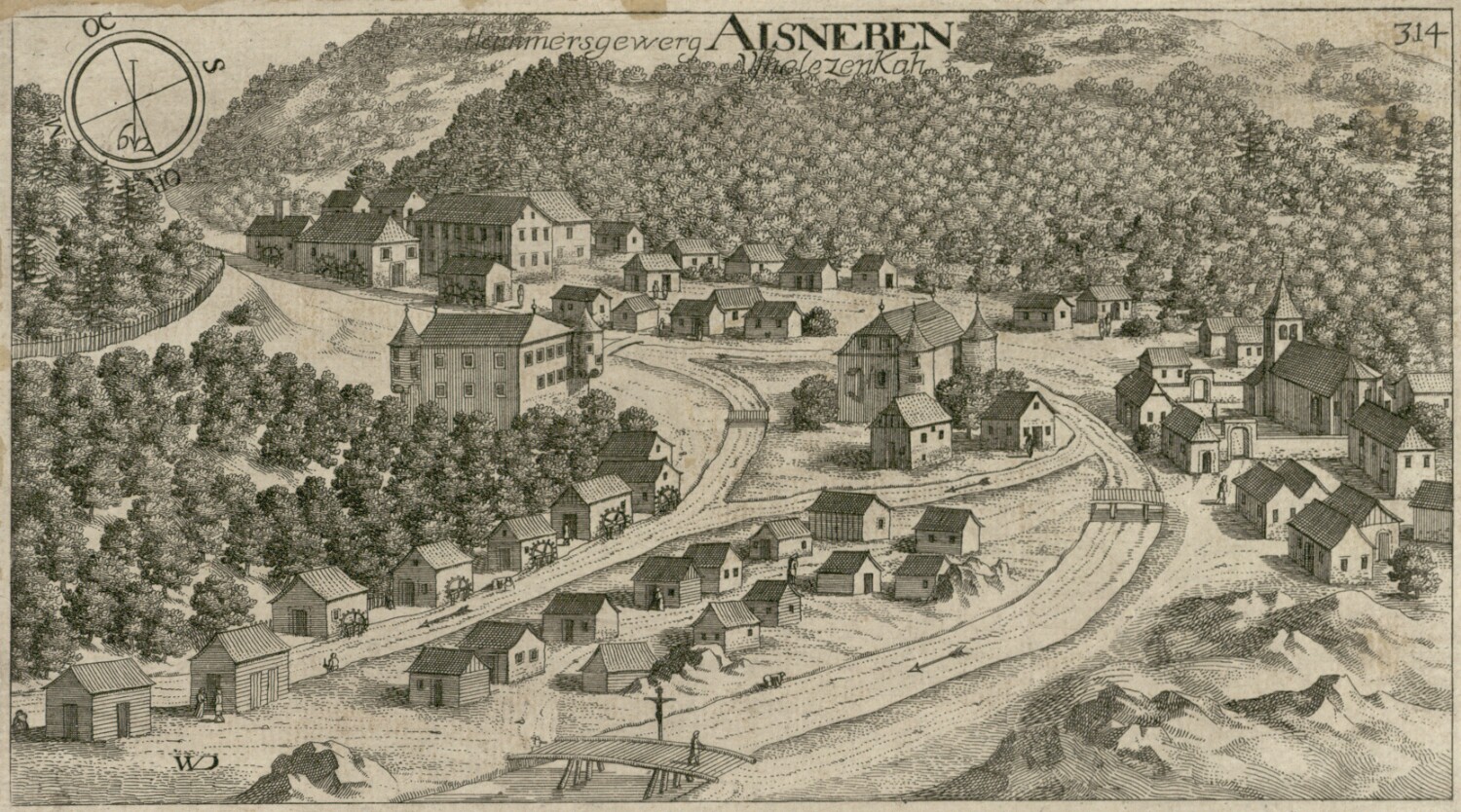Plavž, simbol kraja in najbolj markanten objekt v Železnikih stoji nasproti Muzeja v Železnikih. Sezidan je bil okoli leta 1860, uporabljal pa se je kot peč za taljenje železove rude. Je najstarejši slovenski plavž ter edini ohranjeni plavž teke vrste v Evropi. Hkrati je tudi prvi zaščiten tehniški spomenik v Sloveniji, zaščitili so ga že v letu 1940. Zgradba ima v spodnjem delu kurišče, piramidasto jedro in štiristrani dimnik. Do zamrtja železarstva (zaradi konkurence večjih podjetij) so bili glavni izdelki žeblji, tedaj najbolj iskano izvozno blago v Sredozemlju. Dobavljali so jih v sodčkih »bariglah«. V enem sodčku je bilo do 18.000 žebljev srednje velikosti, ki so jih preko tržaške luke prodajali po vsem svetu. Pred zamrtjem železarstva so na trgu pred plavžem stale delavnice, pomožni prostori železarne in druge naprave, ki jih je gnala voda. Ugasnil je leta 1902, kot zadnji plavž na slovenskih tleh. Ogledate si ga lahko kadarkoli, tudi ponoči, saj je osvetljen.
V Muzeju zraven plavža si poleg 600 letne zgodovine železarstva lahko ogledate še zgodovino čipkarstva, lesarsko zbirko, izdelavo strešne kritine iz skrila, življenje kraja in okolice, spominsko sobo akademika dr. Franca Koblarja ter zbirko o NOB.
Več o zgodovini plavža si lahko preberete v Digitalni knjižnici Slovenije , če pa vas zanima sprehod po starem delu Železnikov in ogled celotne fužinarsko kovaške poti pa je več informacij na spletni strani Kulturno turističnega društva Vigenjc (poiščite pdf datoteko "Predstavitev Fužinarsko - kovaške poti").
ENG: The blast furnace, a symbol of the place and the most striking object in Železniki, stands opposite the Museum in Železniki. It was built around 1860 and was used as a furnace for smelting iron ore. It is the oldest Slovenian blast furnace and the only preserved blast furnace of its kind in Europe. At the same time, it is the first protected technical monument in Slovenia, it was protected as early as 1940. The building has a fireplacein the lower part, a pyramidal core and a four-sided chimney. Until the extinction of the iron industry (due to competition from larger companies), the main products were nails, then the most sought-after export commodity in the Mediterranean. They were supplied in barrels. There were up to 18,000 medium-sized nails in one barrel, which were sold worldwide through the port of Trieste. Before the slaughter of the ironworks, workshops, auxiliary rooms of the ironworks and other water-powered devices stood in the square in front of the blast furnace. It was extinguished in 1902, as the last blast furnace on Slovenian soil. You can see it at any time, even at night, as it is illuminated.
In the Museum next to the blast furnace, in addition to the 600-year history of ironworks, you can also see the history of lacemaking, the wood collection, the production of slate roofing, the life of the place and its surroundings, the memorial room of academician dr. Franc Koblar and a collection on the National Liberation War.
 Valvazorjev zemljevid Železnikov iz leta 1689 / Valvasor's map of Železniki from 1689
Valvazorjev zemljevid Železnikov iz leta 1689 / Valvasor's map of Železniki from 1689